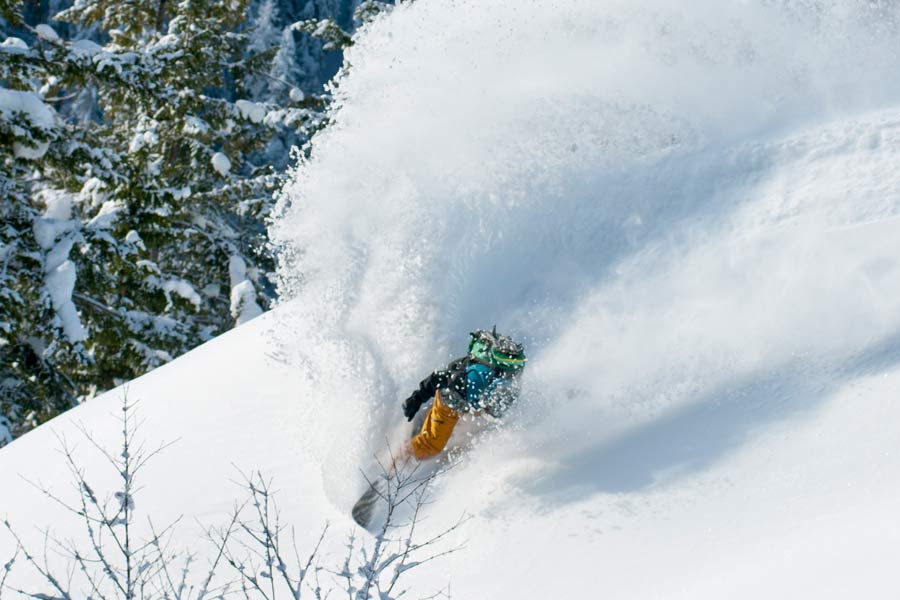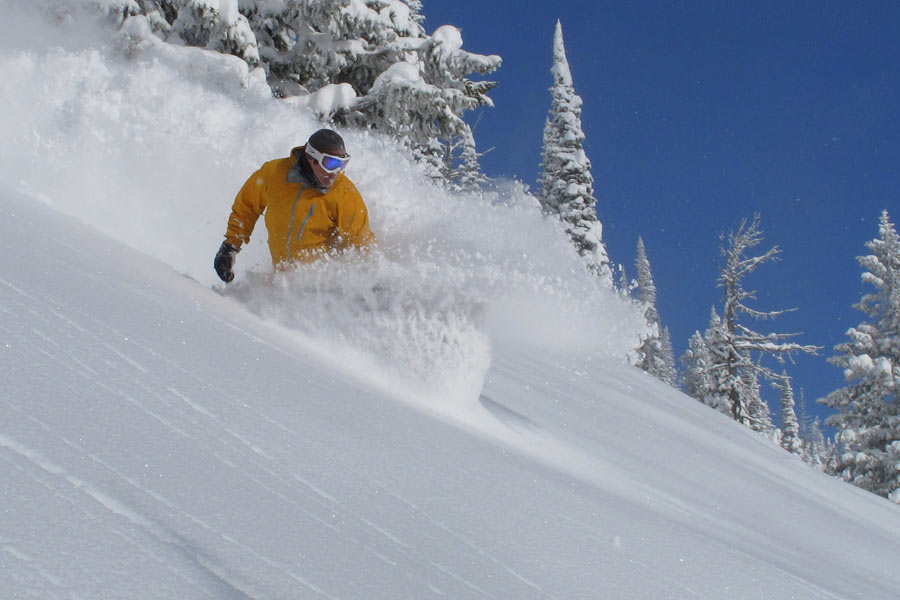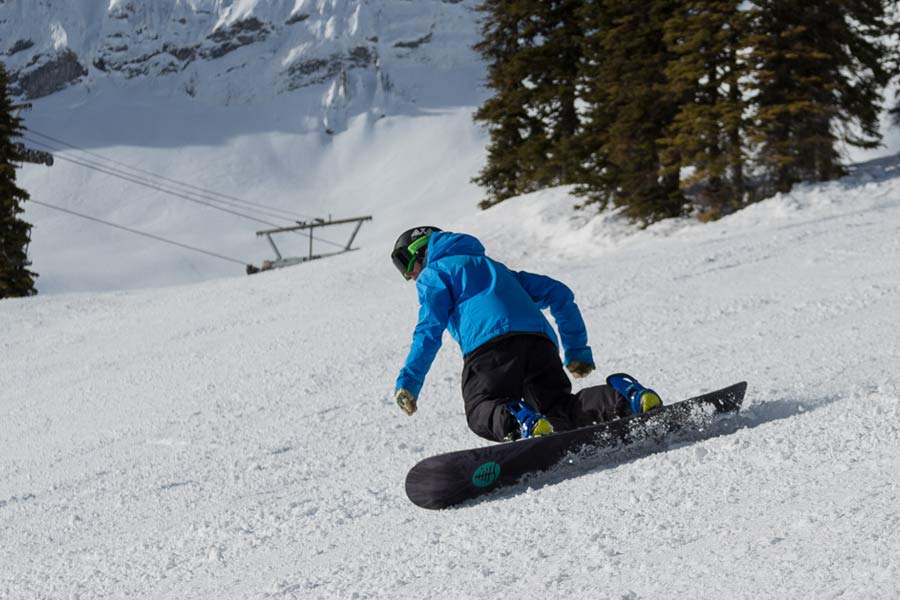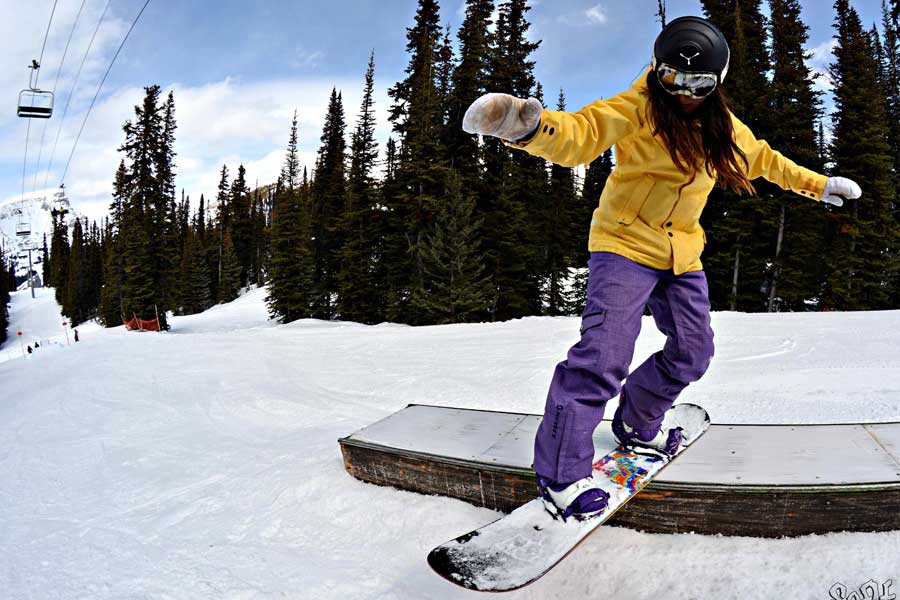- About
- Courses
-
Destinations
EuropeNew Zealand
- Journal
- Contact
Following on from his first blog, Clarence is getting a bit more technical as he takes us through snowboard shape and design. There are so many different shaped boards on the market these days, hopefully this piece will help you find which one(s) is(are) best for you.
Have you ever been on an airplane where people applauded when the pilots proceeded to doing their jobs... Uh, sorry, landed the damn thing? As a pilot myself, let me tell you that it is not the landing you should be worried about. There is a saying in the industry that goes: 'A good landing is one where you can walk away unscathed. A great one is one where you can use the plane again." Snowboards are a lot like airplane landings. The vast majority of them are great, most of them are good, and very few are bad enough to put your life at risk. Every snowboard has its purpose, and that is why you need to choose wisely. In my previous blog, I talked about questions to ask yourself to help narrow down your selection. Now, let's talk about how to pin-point which one is for you.

Enjoying the goods in Red Mountain!
If you are looking at Nonstop, there is a solid chance you are considering on coming to Canada to learn, or get better at, snowboarding. Therefore, you must have heard of the insane amount of powder snow that falls here every year. Fernie alone gets an average of 900cm of snow every winter! In order to ride like all those guys you saw in The Fourth Phase you need to float on top of the snow. Riding in these conditions is a lot like surfing or wakeboarding, it is an unreal sensation, the only thing that makes me giggle like a baby. You need a combination of two things to hover like that: speed and a big enough surface area under your feet. The speed we can work on when you get here, but the surface area under your feet, that is your board. Now if you ever listened to your geometry classes in elementary school, you will know that the surface of an area equals its length by its width. How much surface you need depends on a few factors: your weight, your height, and your foot-size.
Weight vs board
Too many snowboard salesmen will try to match you with a snowboard depending on your height. That thought is true to a certain extent, but let's get to that shortly. First of all, every snowboard has a weight range. Being within that weight range will allow you to really ride that snowboard the way it is meant to be ridden. For example, if you were heavier than the proposed weight range for a given board you might think it is actually softer than what the salesman told you, and vice versa if you were too light. Another aspect to consider with your mass is floatation. The heavier you are, the bigger your board will need to be in order to keep you on top of the snow. Put yourself on a scale before heading to the shop, trust me, you don't want to end up with something that will just sink on powder days.

Fernie alone gets an average of 900cm of snow every winter! In order to ride like all those guys you saw in The Fourth Phase you need to float on top of the snow.

Do you want to float?
HEIGHT VS BOARD
As I said before, height is also an important thing to consider when buying a board. Think of it as a pry bar. The higher your mass sits on top of your board, the more leverage it will have to bend it. Theoretically, if you take two riders of equal weight, one measuring in at 150 cm (a really wide one) and the other at 215 cm (lanky as) and you give them exactly the same snowboard, boots and bindings, the taller one should be able to bend the board with more ease than the short one. I said theoretically because I did not include skill, and that is where we come in and show you how to bend any board you will bring with you so you can butter the hell out of our slopes!
FOOT SIZE VS BOARD
Next thing to consider when shopping for a board is foot size. The essence of it is that you do not want your feet to stick too far out over the edges of your board because that could create toe/heel drag that would be unpleasant as you become a better rider. Inversely, if your feet are too small for the width of the board, you will have no leverage when the time comes to increase your edge angle, and it will make your edge to edge transitions a lot slower. Guys, most boards will be made in regular and wide sizes, find the one that is right for you. Girls, unfortunately the industry does not make wide women's boards, but you could always find an equivalent board in men's regular sizes that would be suitable for you if you have big feet, it is not uncommon.

Swooping carve down Bear, Fernie, BC.
Now that we've looked at ourselves and how our bodies affect the board we will ride, let's have a look at the aspect of board technology that, in my opinion, most affects our riding: the camber profile. The word camber has several uses, but the one that is closest to the way it is used in snowboarding is the way it is used in construction. A camber beam refers to a joist with an upward curvature to compensate for load deflection. Traditional camber, or as some people might refer to it, regular camber, would look something like this on a snowboard:

The Burton Custom Camber has an upward curvature from tip to tip.
Traditional cambered boards will naturally feel stiffer because of their desire to return to their original shape. They are great carvers because of the energy that can be stored and deflected in the curvature. High end park riders will use this shape to give them more pop, and stability on landing. Such boards will be more stable at high speed because of distance between the contact points on the snow, the thing wants to hug the ground. First downside of this profile is that it wants to sink in powder because its nose naturally points towards the ground. It is also not very forgiving, especially when matched with a stiff plank. This was the only way snowboards were built for about 20 years, and that is why some people just love it. It is my weapon of choice for an everyday ride because it is what I grew up with and I always get a good feeling out of it.
Reverse camber, or rocker, is when a board comes out of the press with a downward curvature, like a banana, if you were to hold its tips up. This technology came out about 10 years ago, when Lib Tech Snowboards introduced their Banana Board. The idea behind it was to allow a rider to own a shorter board and still be able to ride powder. Because the tips are now naturally pointing up, the board has a tendency to float. Just like a surfboard.

Traditional cambered boards will naturally feel stiffer because of their desire to return to their original shape. They are great carvers because of the energy that can be stored and deflected in the curvature.

A predominantly rockered board has one contact point right in the middle. The Lib Tech T. Rice has added traditional camber fore and aft of the feet.
Rockered boards will generally feel softer. Their shape will literally make you rock fore and aft on your board, making it easier to perform butter tricks. Like I mentioned before, it will float better in powder because of its natural tendency to act like a surfboard. Whether you are learning how to snowboard for the first time, or want to learn a new trick, the raised tips will allow for forgiveness. If you wash out upon landing or are attempting your first turns, the tendency to catch an edge will be a lot lower On the other hand, boards with this type of camber will be less stable at speed as they will always want to pivot around their central contact point and feel "shaky". It will also be harder to learn how to carve on them because of their tendency to wash out.
Before we continue with the different kinds of hybrids, let's go over what you will need on your journey with Nonstop. I would like to remind you at this time that there are really two avenues to choose from when deciding on how to equip yourselves: the "one-board" arsenal, or a quiver with many boards for different situations. There are also different scenarios to consider. The desire to become an instructor and make a career out of it would mean that you need a board that will allow you to perform certain maneuvers for demonstration purposes. If you are solely a powder hound and are coming over on an improvement course, that rockered board might be a good choice. You are a freestyle artist? Then consider the predominantly cambered board for the pop and stability. Think of what snowboarding really is for you and choose accordingly.

Rockered boards will generally feel softer. Their shape will literally make you rock fore and aft on your board, making it easier to perform butter tricks.

Soft rockered boards are great to improve your rail game!
The next technology in line is that of the "flat" camber. It is described simply as: it's flat. Boring, right? Well let me tell you one thing, it was invented for a lot of reasons, primarily to have to best of both worlds. Its flatness means the whole board is always in contact with the snow which makes it stable like a cambered board, but does not have the tips pointing down to make you sink in powder. It also means you can bend it at your will like a rockered board, such a shape offers less resistance to butters.

The K2 Ultra Dream is a proven model that keeps coming every year as an awesome all around free ride board.
If you're in the market for all-round boards, have a good look at flat cambers. They will often be combined with early rise (rockered tips) to make them even greater when Ullr (the Norse God of snow) punishes us with 40 cm overnight. They will make decent carvers as they will not have as big a tendency to wash out like rockered boards, although you will not be able to store and deflect as much energy for those aggressive high speed carves vs. a cambered board.
In order to reach the best of both worlds, snowboard brands have started making hybrids, as well as flat boards. Hybrids will include different kinds of camber at different places on the board. There are two major kinds of hybrids with hundreds of different variants each. The first one is Camber-Early Rise. It is generally camber between the feet, and rockered tips.

Notice how the camber ends under the binding inserts on this K2 JoyDriver. The tips are then rockered starting at the inserts.
This camber profile is really good for riders who enjoy a traditional cambered board, because of the pop it can give back, but who also want something to allow them to float a bit more in powder. It will also be a lot easier to rock onto the nose and tail to do ground maneuvers, like butters and ollies. With contact points under the feet, it also makes a powerful carver, and a stable freestyle board.
Some brands decided to go the opposite direction trying to reach Utopia. They put the rocker between the feet, and the camber at the nose and tail of the board. It looks something like this:

The Lib Tech Lando Phoenix looks like it has 3 contact points with the ground.
The rockered section between the feet will give it a little bit more flex, and a centre pivot point you can really feel when you are trying to make a quick turn. The camber in the nose and tail will add stability at speed and extra contact points on the snow to avoid washing out. It is another great multi-tool.
The possibilities are endless, and maybe one day you will have tried most of them. Remember that the key to it all is to enjoy yourself. In one of my next blogs I will describe what being an instructor involves. For those of you who are looking to buy a board before coming on one of our instructor courses, you might be interested to read about what kind of riding/maneuvers you will be asked to do in order to pass your certifications. Trust me, the right board makes all the difference. There will also be another article about the rest of the gear, such as boots and bindings, as well as board shapes, their facts and myths.
I could not have written this article without the help of Edge Of the World boardshop in Fernie, BC. All the board pictures were provided by them. They have the most knowledgeable staff in town, and they really know how to show you all the subtle differences in their boards by sacrificing a perfectly good pool table for the cause. Please go and say hi when you're in town, they will show you a good time with their ping pong table, table hockey, and plenty of couches and TV screens playing only the best snowboard features out there.
To finish off, here is a neat video from Whitelines Magazine that shows how a snowboard is made. Enjoy!
Learn More
If you want to learn more about snowboards, check out Clarence's blog on what questions to ask yourself to help you narrow down the wide variety of boards on the market to a smaller shortlist.
We look forward to speaking with you.